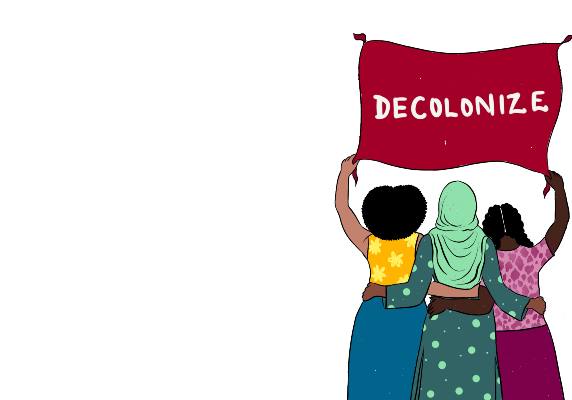Gender mainstreaming: moving from rhetoric to reality
Since “gender mainstreaming” was first officially adopted as a strategy at the UN International Conference on Women in Beijing in 1995, the term has become ubiquitous.
Nearly all international development organisations and donors now espouse their commitment to gender equality and to mainstreaming gender in their policies and programmes. However, there is very often a significant gap between organisations’ rhetorical commitment and the day-to-day reality of their programmes and operations.
At the upcoming Bond Conference, we’ll be exploring ways to close that gap and ensure our programmes are genuinely inclusive and transformative. This piece attempts to offer some initial suggestions for strengthening attention to gender at both an organisational and programmatic level and making “gender mainstreaming” a more robust and meaningful process.
What do we really mean by gender mainstreaming?
There are a number of different definitions of gender mainstreaming, but perhaps the most frequently quoted comes from the UN Economic and Social Council, which defines gender mainstreaming as:
…the process of assessing the implications for women and men of any planned action, including legislation, policies or programmes, in all areas and at all levels. It is a strategy for making women’s as well as men’s concerns and experiences an integral dimension of the design, implementation, monitoring and evaluation of policies and programmes in all political, economic and societal spheres so that women and men benefit equally and inequality is not perpetuated. The ultimate goal is to achieve gender equality.
This definition notably emphasises assessments and planning procedures, leading some to prefer UNESCO’s definition, which usefully shifts the emphasis to acknowledge the changes in mindset and power that may be required:
Mainstreaming is a process rather than a goal that consists in bringing what can be seen as marginal into the core business and main decision-making process of an organisation.
Conversations around gender mainstreaming also often refer to the importance of “twin track” approaches, seeking to both increase and strengthen targeted, gender transformative programmes to advance girls’ and women’s rights, while also simultaneously seeking to ensure that all other programming is at least gender sensitive and a gendered perspective is adequately considered.
Isn’t the term “gender mainstreaming” problematic?
Yes. There’s a great deal of academic literature around gender mainstreaming from a range of different perspectives. Some feminist practitioners disavow “gender mainstreaming”, feeling it has become a weak, technocratic term drained of any real political bite. Others still hold out hope for its potential, or pragmatically advance a gender mainstreaming agenda while recognising its challenges.
Subscribe to our newsletter
Our weekly email newsletter, Network News, is an indispensable weekly digest of the latest updates on funding, jobs, resources, news and learning opportunities in the international development sector.
Get Network NewsFor the pragmatists wishing to (re)invest “gender mainstreaming” with energy and ensure it is more than a tick-box exercise, the below offers suggestions of key considerations at an organisational and programmatic level.
What does gender mainstreaming require at an organisational level?
Programmes can’t be divorced from the staff and organisations that design and implement them. Mainstreaming gender in programming first requires attention to the ways of working and organisational culture that either support or inhibit staff from strengthening attention to gender in their work. Key considerations include:
- Investing in and supporting dedicated, specialist staff with sufficient time, resources, and expertise to drive change.
- Building capacity, going beyond one-off training to institute a process of continuing professional development to foster the attitudes and skills needed for gender sensitive and transformative work.
- Working with HR to incorporate gender competencies into recruitment and performance management frameworks; analyse and address the gender balance and pay gap of staff; strengthen policies around parental leave, flexible working, etc.; strengthen policies, reporting mechanisms, and support systems in relation to bullying, harassment, and abuse; etc.
- Developing a gender policy, strategy, and action plan that is resourced and regularly reviewed.
- Putting in place strong accountability mechanisms, including key performance indicators that are tracked and reviewed at senior levels.
- Fostering an enabling organisational environment and culture that supports and encourages open reflection, discussion, and learning on questions of gender and power within the organisation and its work.
These sample strategies demonstrate that gender mainstreaming at an organisational level requires a multi-pronged approach with participation and engagement from across the organisation, including visible commitment from senior leadership.
What does gender mainstreaming require at a programmatic level?
With this foundational organisational infrastructure in place (or at least in progress), it becomes more likely that NGOs will be better equipped to design and deliver meaningfully gender sensitive and transformative work. Thinking across the project cycle, this requires:
- Analysis. This seemingly obvious first step is so often missed. We must systematically and routinely invest the time and resources in gender analysis to better understand the gender norms and power relations embedded in every community that inevitably impact every project. This analysis must be meaningfully intersectional, recognising the ways in which gender inequalities may be exacerbated by other axes of identity and marginalisation. Analysis should also recognise, value, and engage the expertise of girls’ and women’s rights organisations.
- Design. Even when a gender analysis is conducted, often the report is ignored and the findings not used to inform programme strategies. Rather than simply recycling familiar strategies from past projects, we must appropriately tailor our strategies to respond to girls’ and women’s expressed needs and contexts. Design processes should also include a more intentional approach to risk mitigation – actively taking steps to identify and mitigate particularly gendered risks (including increased risk of violence, exacerbating girls’ and women’s time poverty, among many others).
- Implementation. Projects should incorporate not only initial training, but ongoing capacity development of all partners and staff on gender throughout the project lifespan. Training and reflection sessions should focus not only on knowledge, but should aim to enable critical reflection on gender relations and foster a transformation in staff’s own attitudes. In addition, gender should also be integrated into the routine administration of any project – including agendas, reporting templates, etc. – to encourage regular reflection on progress.
- Monitoring. Any project carries the risk of unintended consequences, and transformative work, in particular, has a particular risk of backlash. In all projects, careful, intentional monitoring conducted by trained female and male staff is needed to identify and respond to shifts in community dynamics and changes in protection risks.
- Evaluation and learning. Most evaluations tend to rely on the standard DAC criteria, from which gender is conspicuously absent. Evaluations should actively seek to explore and understand a project’s impact on gender dynamics – both positive and negative – and should include gender as part of the evaluation criteria and framework.
Investing in the journey
For those looking for a simple checklist, the above may feel overwhelming or disappointing. Yet it must be recognised that gender mainstreaming is, and should be, a substantive undertaking.
NGOs and donors need to resist the temptation toward quick wins and easy answers and recognise that gender mainstreaming can’t be accomplished simply with a one-off training or a new policy. Rather, gender mainstreaming requires a significant investment of resources and dedicated staff who are equipped and supported to drive change. Gender mainstreaming also requires grappling with the contentious and thorny power dynamics embedded within every organisation and context. Without this difficult, often uncomfortable, reckoning, gender mainstreaming is likely to remain a tokenistic gesture.
Useful resources
- For more on the thinking around gender mainstreaming, see the Beyond Gender Mainstreaming issue of the Gender and Development Journal.
- A Theory of Change on Gender Mainstreaming [PDF], developed by the Gender Mainstreaming Working Group of the Gender and Development Network, usefully outlines various stages on the journey of gender mainstreaming, offering different entrypoints for organisations.
Get more practical ideas and steps for truly inclusive programme design and implementation at the Bond Conference.
Category
News & ViewsThemes
Gender



